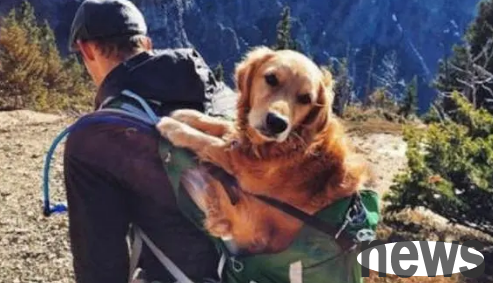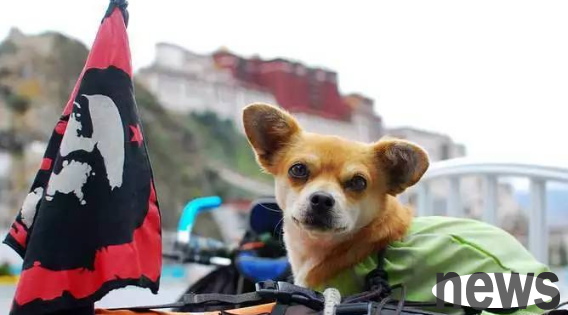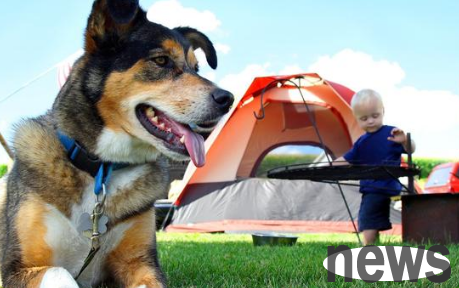Do you also want to take your puppy on a trip?
Traveling can enhance your relationship with your puppy, and it can also allow your puppy to experience different environments and atmospheres.
However, there are many things to note when traveling with a puppy, which may cause trouble and danger to you and your puppy if you are not prepared.
So, today I want to tell you 10 steps to keep you safely traveling with your puppy.

Step 1: Check your puppy's health
Before you set out, you must make sure your puppy is healthy and does not have any infectious or chronic diseases.
You can take your puppy to the veterinarian and ask the veterinarian to do a comprehensive examination of your puppy, including weight, cardiopulmonary function, teeth, ears, eyes, skin, etc.
The veterinarian can also give your puppy some necessary vaccinations, such as rabies, parvovirus, hepatitis, etc.
If your puppy has special medication or food needs, remember to bring enough amounts and ask your veterinarian for how to take or feed your puppy on the go.
Step 2: Choose the right means of transportation. Different means of transportation have different regulations and restrictions on traveling with puppy. You must choose the right means of transportation according to your destination and budget.
If you choose to take a plane, you need to know in advance the airline's policies regarding pet carrying, such as whether you need to provide a health certificate, whether you need to make an appointment, whether you need to pay extra fees, etc.
Generally speaking, small dogs weighing less than 8 kg can be carried with you and placed in a breathable cage under the seat; medium and large dogs weighing more than 8 kg need to be placed in a dedicated air box and placed in the cargo hold.
In either case, you want to make sure your puppy has enough space and comfort in the cage or airbox and give it water and toilet before departure.
If you choose to take a train or a car, you should also understand the relevant departments’ regulations on bringing pets in advance, such as whether you need to wear a mask, whether you need to isolate, and whether you need to pay extra fees.
Generally speaking, it is relatively relaxing to carry pets on trains or cars, as long as you can ensure that your puppy will not disturb other passengers or drivers and can clean up its excrement in time.
In either case, you want to make sure your puppy has enough rest and activity during the trip and give him water and toilet regularly.

Step 3: Select a suitable accommodation When choosing a accommodation, you need to consider the following factors:
Where are pets allowed? Is there an additional fee or a deposit? Is there a dedicated pet room or area? Is there sufficient space and facilities? Is there a nearby pet store or veterinarian? You can search online or consult on phone to learn about the pet policies of different accommodations, or you can book suitable accommodation through some special pet travel websites or platforms.
When checking in, you should tell the hotel staff that you are carrying a puppy and abide by the hotel's pet rules, such as not letting your puppy run or barking in the room, not letting your puppy damage the items in the room, not letting your puppy affect the rest of other guests, etc.
When leaving, you need to check the room for hair or stains left by your puppy and clean it up or compensate it in time.
Step 4: Choose a suitable destination
When choosing a destination, you need to consider the following factors: Whether
is suitable for traveling with puppy
Is there sufficient safety and hygiene
Is there sufficient fun and interactive
Is there sufficient pet friendly
You can search online or consult locals to understand the suitability of different destinations for traveling with puppys, or you can obtain relevant information through some special pet travel guides or guides.
Generally speaking, some places with beautiful natural scenery, fresh air, few people, few cars, rich animals and plants, complete facilities, and loose rules are more suitable for traveling with puppies, such as parks, forests, beaches, farms, etc.
Some places with dense population, air pollution, traffic congestion, high noise, lack of facilities and strict rules are not suitable for traveling with puppies, such as shopping malls, museums, restaurants, theaters, etc.
In either case, you must respect local culture and habits and abide by local laws and regulations.

Step 5: Prepare the necessary items
Before departure, you must prepare some necessary items for you and your puppy just in case.
These items include:
You and your puppy's identification and health certificate
Your contact information and emergency contact person
Your insurance policy and medical card
Your and your puppy's common medicines and first aid supplies
Your and your puppy's food and water, and dietary utensils
Your and your puppy's toys and snacks, and Entertainment equipment
Your clothes and blankets and warming equipment
Your leash and collars and safety equipment
Your cage or air box and transportation equipment
Your and your puppy waste bags and cleaning equipment
These items should be selected according to your and your puppy's actual needs and travel plans, and do not be too much or too little.
Step 6: Maintain a good attitude
During the journey, you must maintain a good attitude and not be upset or angry about some trivial matters..
You need to understand that your puppy may feel uncomfortable or nervous because of changing the environment, so you need to give it more care and comfort so that it feels that you are its support and protector.
You should also pay attention to your puppy's emotions and behaviors. If you find any abnormality or discomfort, such as vomiting, diarrhea, fever, coughing, itching, fighting, etc., you should take it to the veterinarian in time, or give it some appropriate treatment and care.
You should also try to avoid causing excessive stress or irritation to your puppy, such as not letting it contact animals or people that are dangerous or hostile to it, do not expose it to some too noisy or hot places, do not let it eat food that is harmful or unsuitable to it, etc.
Step 7: Enjoy the fun of traveling
During the trip, you want to enjoy the fun of traveling and don't forget to play and take pictures with your puppy.
You can take your puppy to some pet-friendly attractions or activities, such as walking, running, swimming, boating, camping, picnicking, etc., so that you and your puppy can exercise and relax.
You can also take your puppy to some pet-themed shops or exhibitions, such as pet supplies stores, pet grooming shops, pet museums, pet painting exhibitions, etc., so that you and your puppy can learn new knowledge and appreciate beautiful things.
You can also take your puppy to some pet social venues or activities, such as pet parks, pet cafes, pet parties, pet competitions, etc., so that you and your puppy can make new friends and share experiences.
Step 8: Record the memories of the trip
During the journey, you should record the memories of the trip and do not miss any good moment.
You can use your camera or mobile phone to take photos or videos of you and your puppy in different places and occasions, such as scenery, architecture, characters, actions, etc., so that these images become your common wealth.
You can also use a laptop or computer to record your feelings or stories with your puppy in different places and occasions, such as moods, thoughts, conversations, jokes, etc., so that these words become your common witness.
You can also use souvenirs or gifts to record your impressions or characteristics of your puppy in different places and occasions, such as maps, postcards, key chains, clothing, etc., so that these items become your common souvenirs.
Step 9: Keep in touch after the trip
After the trip, you must keep in touch after the trip and do not break off the relationship with people or animals you have known before.
If you encounter some people or animals that are friendly or helpful to you and your puppy during your trip, such as hotel staff, tour guides, veterinarians, other pet owners or pets, remember to express your gratitude and blessings to them, and leave your contact information, such as phone number, email address, social media, etc.
You can also send them regular updates about you and your puppy, such as photos, videos, articles, messages, etc., so that they can know how you are doing and share your happiness and difficulties.
You can also invite them to meet again or travel together, such as agreeing on a time and place, or recommending a destination and event to continue and deepen your friendship.
Step 10: Summarize the harvest of travel
After the trip, you should summarize the harvest of travel and do not ignore the changes and growth that this experience brings to you and your puppy.
You can review all kinds of things you and your puppy see, hear, feel, learn, and do during the journey, such as beautiful scenery, interesting characters, novel experiences, useful knowledge, meaningful actions, etc., so that these things become your wealth and motivation.
You can also reflect on the various problems you and your puppy encountered, solved, avoided, and endured during the journey, such as difficult environments, dangerous situations, unpleasant events, undesirable results, etc., so that these problems can be your lessons and challenges.
You can also look forward to the various plans you and your puppy have to make, change, and continue after the journey, such as a healthy lifestyle, a positive mindset, interesting hobbies, beneficial goals, etc., so that these plans become your direction and dream.